| Columns Retired Columns & Blogs |
Those blue lights seem cool for a while then like they're looking at you. 4 ohms should be better; less resistance. The tube sound is so realistic and evidently so are the Montis, even if you have to dust em.
I used DRA Labs' MLSSA system and a calibrated DPA 4006 microphone to measure the MartinLogan Montis's frequency response in the farfield, and an Earthworks QTC-40 mike for the nearfield and spatially averaged room responses. A note on these measurements is in order:
When a speaker is measured, there is a hidden assumption that the distance between speaker and measuring microphone is significantly larger than the speaker's greatest dimension. With all but very large box speakers, this assumption is true. However, it is almost never true with panel speakers when the measurements are performed with a quasi-anechoic technique in a regular room. It is just not practicable to move the mike far enough away without drastically compromising the measurement's midrange resolution, due to the need to window out reflections of the sound from the room's boundaries. I try to measure such speakers outdoors, to eliminate all room boundaries other than the floor; see, for example, my measurements of the MartinLogan Prodigy. However, this wasn't possible during the period in which I had to prepare this review.
I estimated the Montis's B-weighted voltage sensitivity as 88.7dB(B)/2.83V/m, which is higher than average but lower than the specified 91dB. As with other MartinLogan electrostatic loudspeakers, the Montis's impedance drops to a very low value at the top of the audioband. The Montis is specified as having an impedance of 0.52 ohm at 20kHz. My measurement (fig.1), taken with an Audio Precision System One, gave a figure of 0.7 ohm at 20kHz, but this included 15' of speaker cable. Repeating the measurement using the DRA Labs MLSSA system, which compensates for the speaker-cable impedance, gave a figure of 0.55 ohm at 20kHz. Either way, that this speaker is a difficult load for the partnering amplifier to drive is compounded by the high electrical phase angle, and ameliorated only by the fact that music rarely has high levels of energy in the top octaves.
The drastic rise in impedance below 400Hz in fig.1 is due to the high-pass filter in the panel's signal path, which will relieve the amplifier of having to deliver high currents at low frequencies. The shape of the impedance trace will result in the Montis's top octaves shelving down when the speaker is driven by a tube amplifier having a high source impedance. This is why Robert Deutsch found that his Audiopax amplifier sounded too soft and lacking in definition.
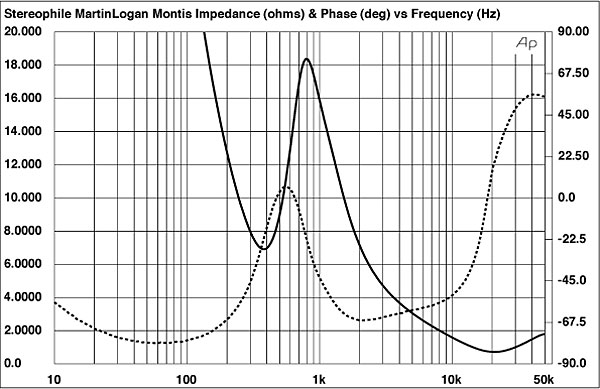
By definition, the panel won't suffer from cabinet resonances. The small enclosure for the powered woofer also seemed free of resonant modes.
The Montis's electrostatic panel is 46" tall. To perform the acoustic measurements, I placed the microphone level with a point halfway up the panel, but with the panel correctly sloped back. The blue trace in fig.2 shows the speaker's response at 50", averaged across a 30° horizontal window centered on the mid-panel axis. The powered woofer's level control was set to its minimum for this measurement, meaning that the behavior shown in the midrange will be almost entirely due to the panel. Although a large number of narrow peaks and dips are apparent, these tend to cancel each other out and will not be audible as such. The response trend from 400Hz to 20kHz is actually commendably even, though with a slight downward slope that might be a function of the closer-than-optimal microphone distance mentioned above.
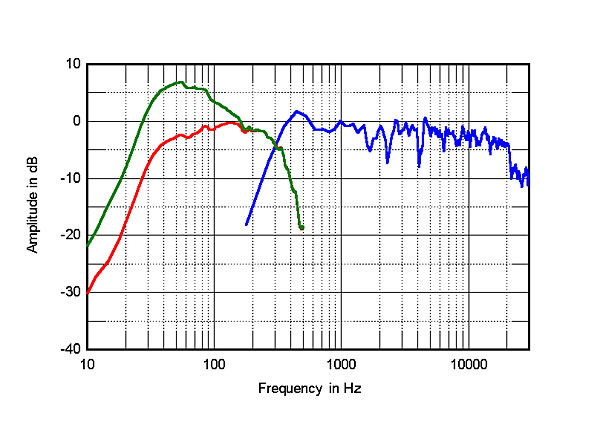
The red trace in fig.2 shows the output of the powered woofer, measured in the nearfield, with the level control set to "–8," which is how it measured flattest under these conditions. The woofer's level control doesn't affect the crossover to the panel but does boost the mid-bass; the green trace in fig.2, for example, shows the woofer's response with the level control set to "0." The level at 50Hz is 6dB greater than with the control set to "–8"—it is hard to conceive of a situation where a "+10" woofer setting will be necessary.
RD felt that the integration of the outputs of the electrostatic panel and active woofer was seamless. To further investigate the integration, which is always an issue with a design that combines lower- and upper-frequency sections with very different radiation patterns, I measured the Montises' spatially averaged response in my listening room, powering them with Classé CT-M600 amplifiers. (I perform this measurement by averaging twenty 1/6-octave–smoothed responses taken for each speaker individually in a rectangular grid measuring 36" by 18" and centered on the positions of my ears in my listening chair. I use a Metric Halo ULN-2 FireWire audio interface, in conjunction with SMUGSoftware's Fuzzmeasure 3.0 running on my Apple laptop.) I set the level of the powered woofer at "0" and you can see from fig.3 that the low frequencies are somewhat exaggerated, with broad peaks at 30Hz and 60Hz that are due to room modes that have not been completely eliminated with the spatial averaging. There is a slight lack of energy in the upper bass and a little too much energy in the mid treble, but otherwise the MartinLogan's in-room response is respectably flat.
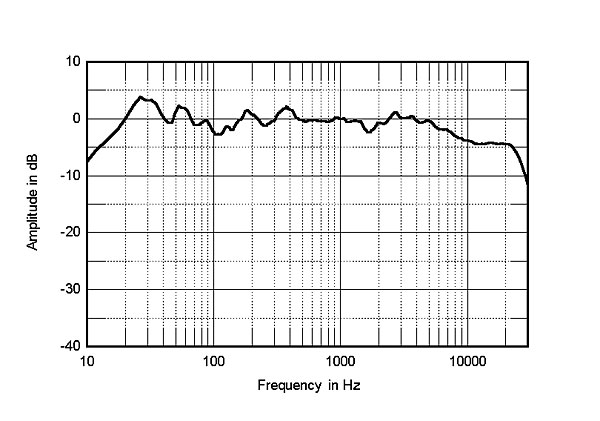
Fig.4 shows the Montis's lateral dispersion, normalized to the response on the mid-panel axis. The radiation pattern above 300Hz is basically that of a dipole, though MartinLogan's gracefully curved diaphragm does indeed widen the dispersion as intended. In the vertical plane (fig.5), there is very little change in response as you move above or below the middle of the panel.
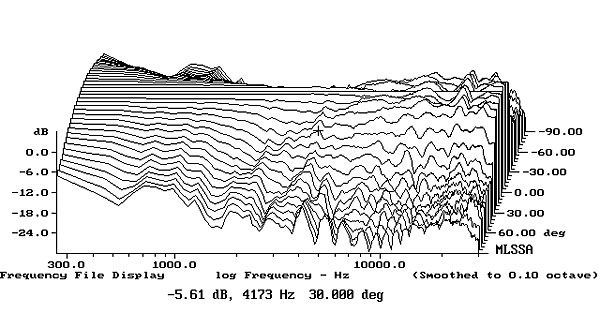

Turning to the time domain, the MartinLogan's step response on the mid-panel axis (fig.6) shows a well-defined, time-coincident, right-triangle step from the panel, but with the woofer's output following about 1.7 milliseconds later. As with all panel speakers, the Montis's cumulative spectral-decay plot (fig.7) appears to be very hashy, with multiple ridges of delayed energy. But as I have argued in the past, it's possible that, with a large panel, this graph is negatively affected by the multiple arrivals at the microphone—multiple arrivals that will be integrated by the ear-brain.

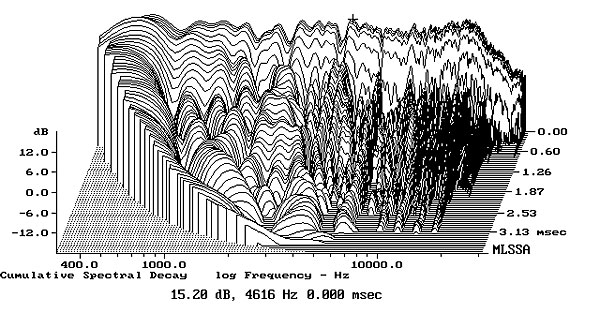
As always with panel speakers, interpreting the MartinLogan Montis's measured behavior is tricky. But overall, the speaker measures as well as the larger Prodigy, which Larry Greenhill reviewed in July 2001, and with the extra flexibility offered by its woofer section being powered.—John Atkinson

Those blue lights seem cool for a while then like they're looking at you. 4 ohms should be better; less resistance. The tube sound is so realistic and evidently so are the Montis, even if you have to dust em.

Nice review ... but i'm puzzled to hear of no comparison to the Spires, the speaker it replaced. They both use the same exact panel and woofer, with the Montis performing the filtering in its DSP versus the analog filtering used in the Spires that was from the venerable CLX series. $1500 more is the price one has to pay to have the DSP compared to the Montis. The two speakers are practically sonically identical (+99%) to most listeners but the Spires can be had for $5000 or so now since they've been discontinued.
.

Martin Logan speakers are grade A junk. They lost their company to another company out of Canada. They used cheap supplies and crap labor to slap together their speakers. If your speaker breaks, it'll take literally years to get it into their repair shop, fixed, and sent back. They have trucks upon trucks of broken speakers waiting to be fixed.

I'm not sure where you've gotten your information, but it reads like bad fiction. I've had the pleasure of working at an independent Martin Logan dealer in Canada for the past 13 years. In that time, I can honestly say that I've only ever seen a handful of Martin Logans ever requiring service--which in itself is impressive, but the statement that you can't get the items fixed and that they have "trucks upon trucks of broken speakers" is pure, unadulterated B.S.
Maybe American retailers do it differently, but when one of my clients informs me of a problem with their speaker, I have them bring it to me, I assess the issue, order the replacement part needed from the manufacturer, and install it as soon as it arrives, so I can get it back into the hands of a happy customer. typically this whole process is completed within 2-3 weeks and my experiences with Martin Logan have been exceptional. By virtue of their technology, electrostatic hybrids are a lot more complicated to work on than conventional dynamic speakers, but I've found the technicians at ML to be extremely helpful in providing me with whatever diagrams and instructions I have needed on the rare occasions that service is required.
The only time before this I've ever heard anyone speak negatively about Martin Logans it was because they were an embittered salesperson that worked for a competing store that was unable to get their hands on the product. . . just saying'. . .